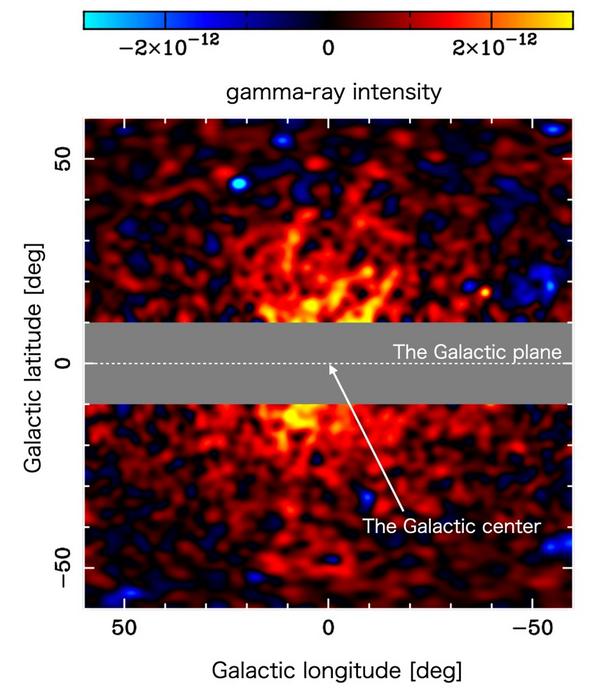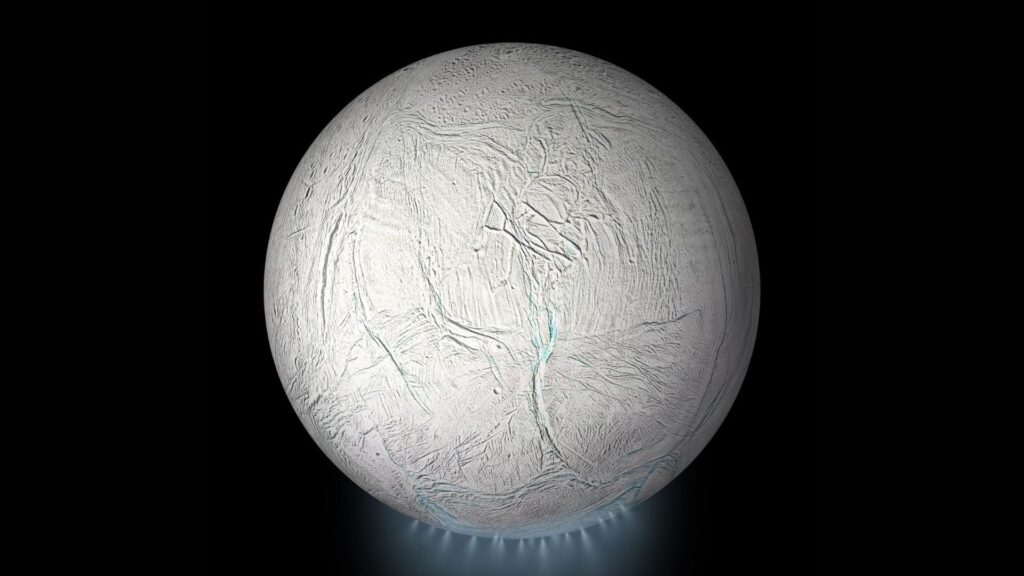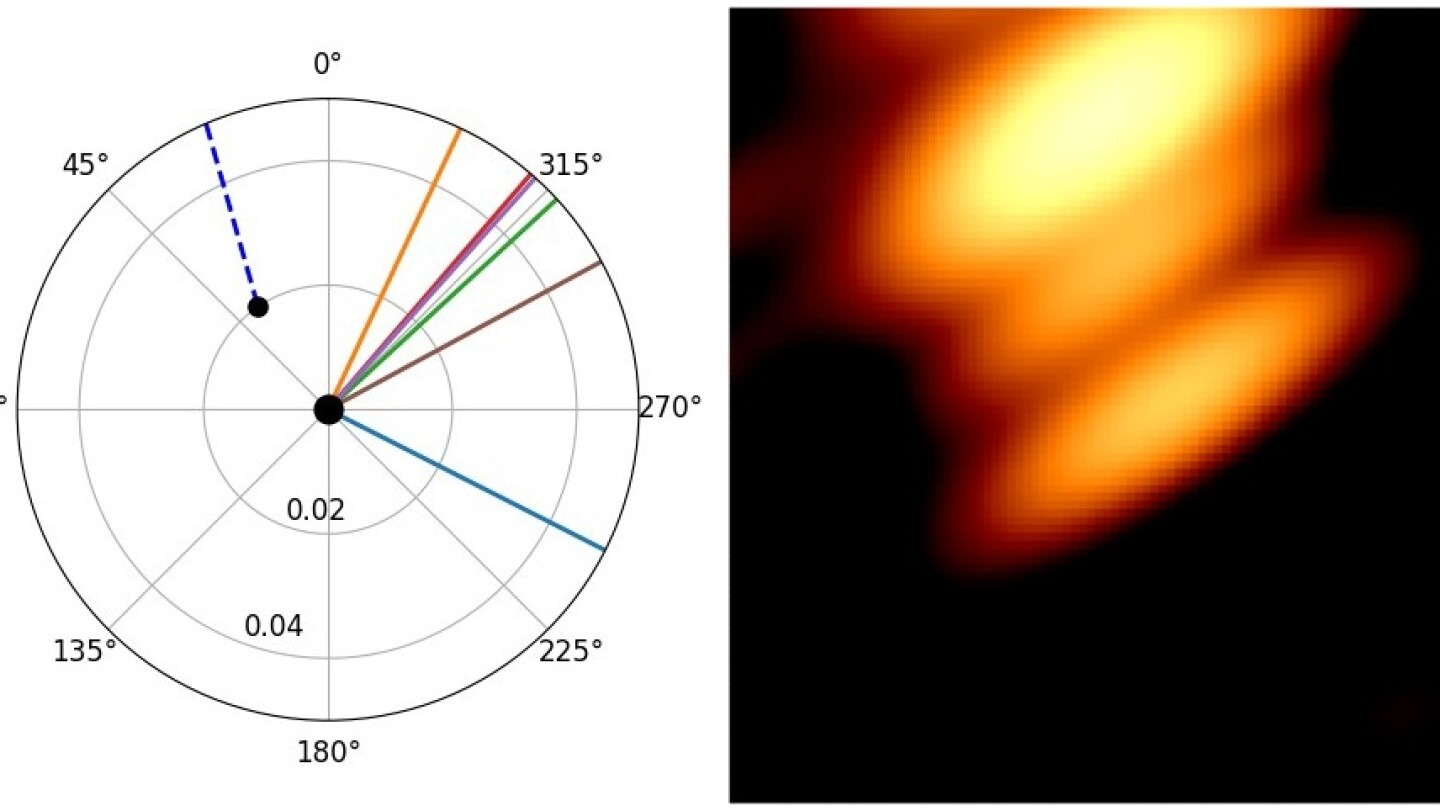Now Reading: How to find Comet Lemmon in the night sky as it brightens this October
-
01
How to find Comet Lemmon in the night sky as it brightens this October
How to find Comet Lemmon in the night sky as it brightens this October
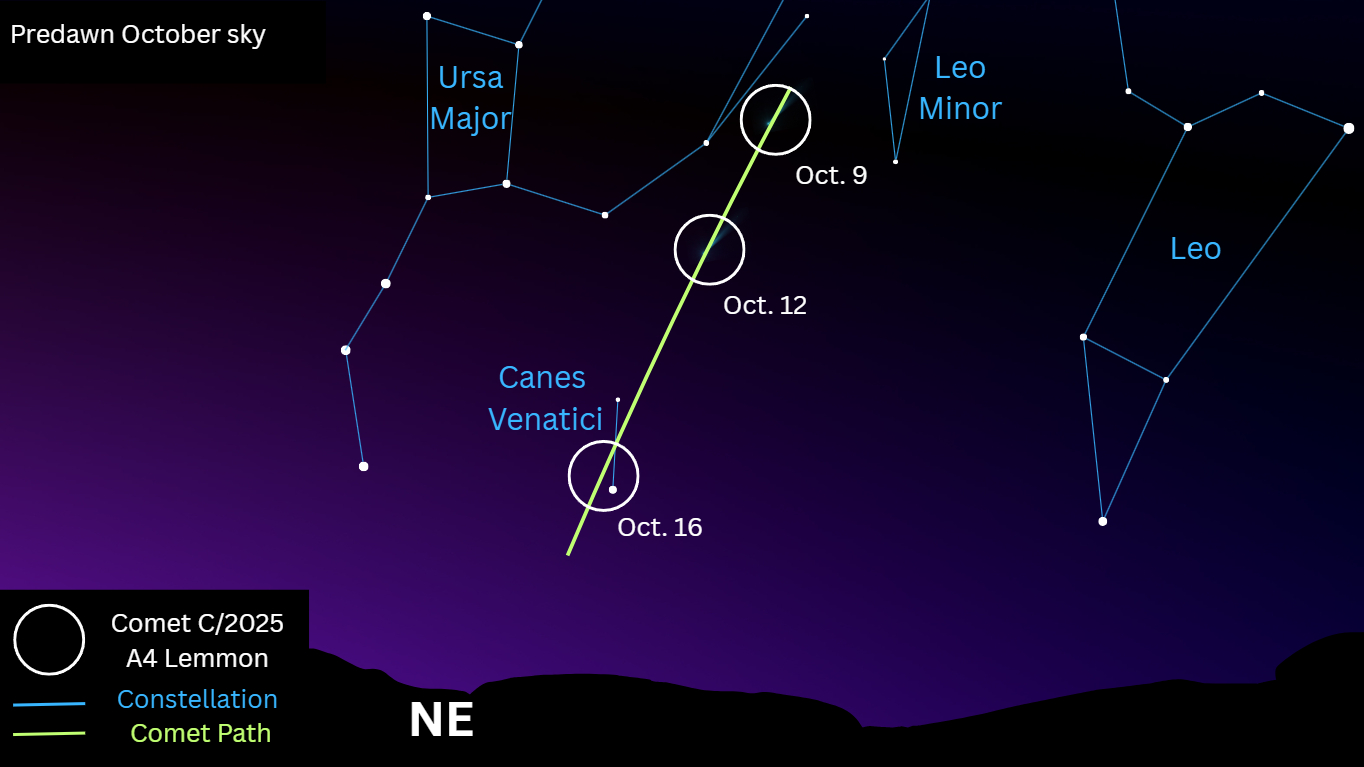
The past month has seen Comet C/2025 A6 (Lemmon) brightening rapidly ahead of its close approach to the sun, leading to growing excitement that it could shine brightly enough to be seen by the naked eye in mid-late October.
Solar system comets tend to become increasingly active and bright in the weeks and months leading up to perihelion — their closest approach to the sun in a given orbit — and Comet Lemmon is no exception. Heat and energy from the sun vaporizes the comet’s icy deposits, transforming them into a gaseous central coma and tail that drags dusty particles along with it, which reflect sunlight and create the dramatic spectacles we see through telescopes or in the night sky.
Read on to discover where and when to look for Comet Lemmon before, during and after its flyby of Earth on Oct. 21.
Magnitude
Magnitude is the scale used to measure the apparent brightness of objects in the night sky. The lower the number, the brighter the object! For context, the brightest stars are around Mag +1, while a full moon is -13 and the sun is -27.
Comet Lemmon has brightened from magnitude +21.5 upon its discovery in January to approximately +5.7, according to the Comet Observation Database (COBS) maintained by the Crni Vrh Observatory in Slovenia. That technically places it above the +6 detection limit of the human eye in perfect dark sky conditions, though the light cast by the waning gibbous moon will add an extra barrier to visibility in the week ahead.
If Comet Lemmon continues its current brightening trend, it could become a beautiful, hazy naked eye target in the coming weeks, with its light becoming easier to define through a pair of binoculars, or a backyard telescope.
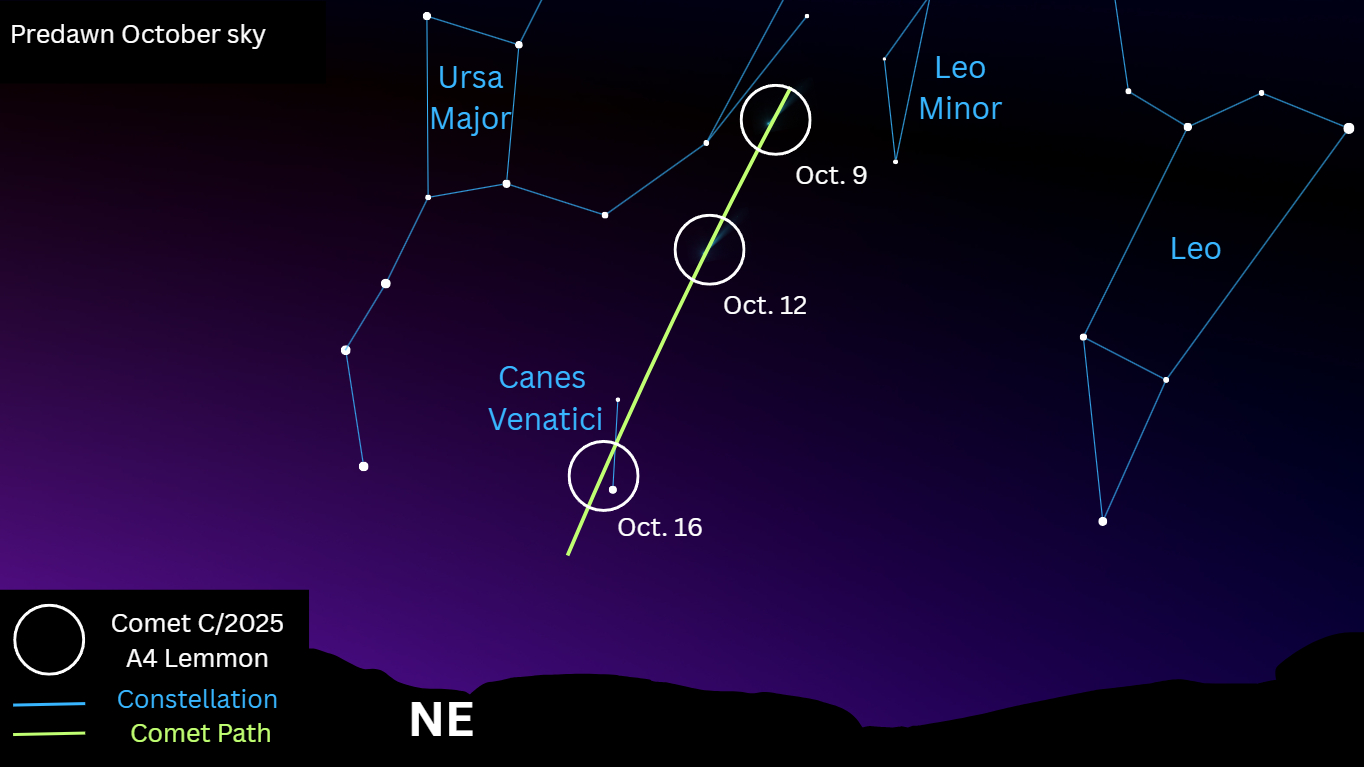
Much like the planets and the moon, Comet Lemmon is constantly shifting relative to the stars beyond. Mid-October will see the wandering body pass close to the star Alkaphrah, or Chi Ursae Majoris in the constellation Ursa Major, just below the ‘dipper’ portion of the Big Dipper asterism, before beating a path through the night sky towards the star Cor Caroli in the constellation Canes Venatici.
Comet Lemon will be in the heart of the constellation Boötes, the Herdsman, as it makes its closest approach to Earth on Oct. 21, before travelling on to pass beneath the head of the great serpent represented in the constellation Serpens on Oct. 26 to 27.
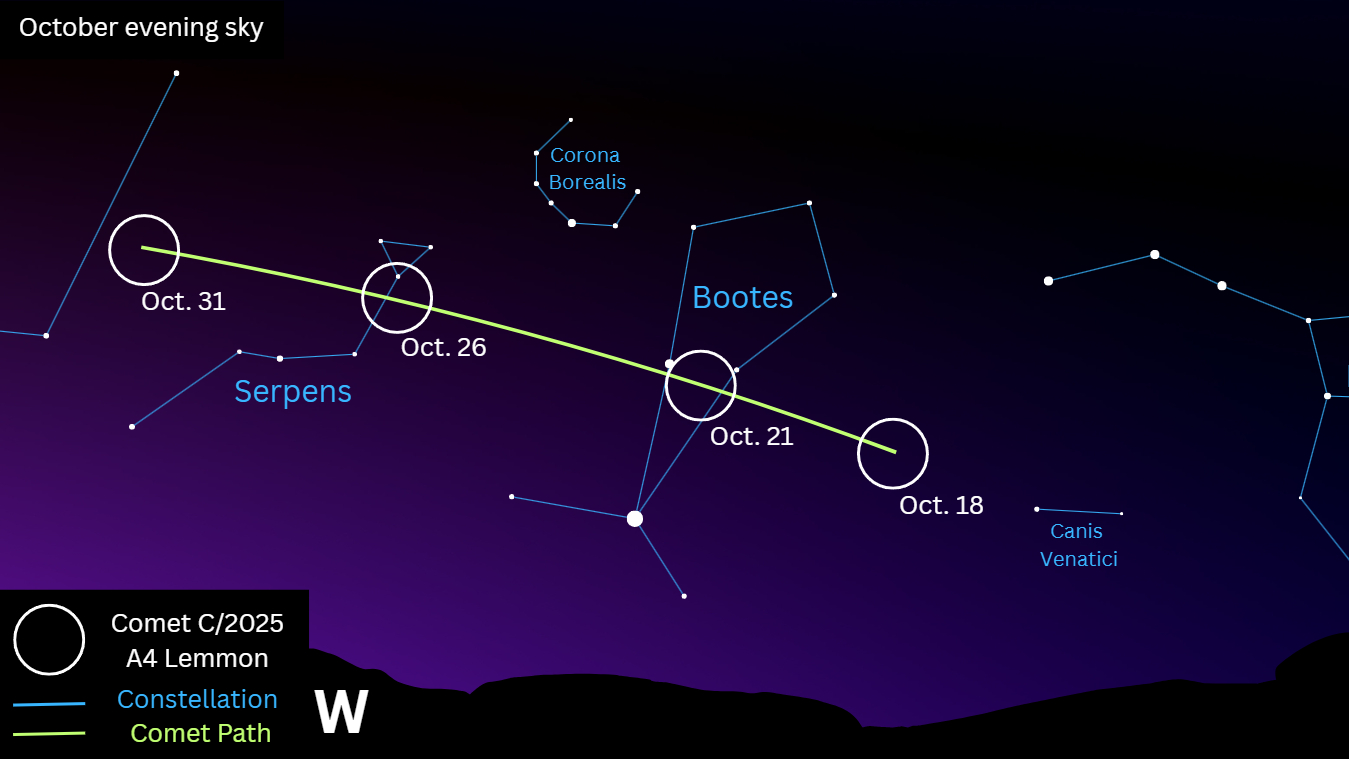
The optimal hour to search for the comet will shift depending on the time of the month in which you are looking. Comet Lemmon will be positioned high above the northeastern horizon in the hours preceding dawn in early October, but will have transitioned to the evening sky by the time it makes its close approach to Earth on Oct. 21, when it will appear low on the northwestern horizon.
Interested in capturing Comet Lemmon with a camera for yourself? Then be sure to read our guide on how to image a comet, along with our picks of the best cameras and lenses available for astrophotography in 2025. Amateur astronomers should also check out our roundups of the best telescopes and binoculars for viewing the night sky.
Editor’s Note: If you would like to share your astrophotography with Space.com’s readers, then please send your photo(s), comments, and your name and location to spacephotos@space.com.
Stay Informed With the Latest & Most Important News
Previous Post
Next Post
-
 012024 in Review: Highlights from NASA in Silicon Valley
012024 in Review: Highlights from NASA in Silicon Valley -
 02Panasonic Leica Summilux DG 15mm f/1.7 ASPH review
02Panasonic Leica Summilux DG 15mm f/1.7 ASPH review -
 03How New NASA, India Earth Satellite NISAR Will See Earth
03How New NASA, India Earth Satellite NISAR Will See Earth -
 04And Thus Begins A New Year For Life On Earth
04And Thus Begins A New Year For Life On Earth -
 05Astronomy Activation Ambassadors: A New Era
05Astronomy Activation Ambassadors: A New Era -
06SpaceX launch surge helps set new global launch record in 2024
-
 07Space Force plans new ‘Futures Command’ amid pressure to speed up modernization
07Space Force plans new ‘Futures Command’ amid pressure to speed up modernization












